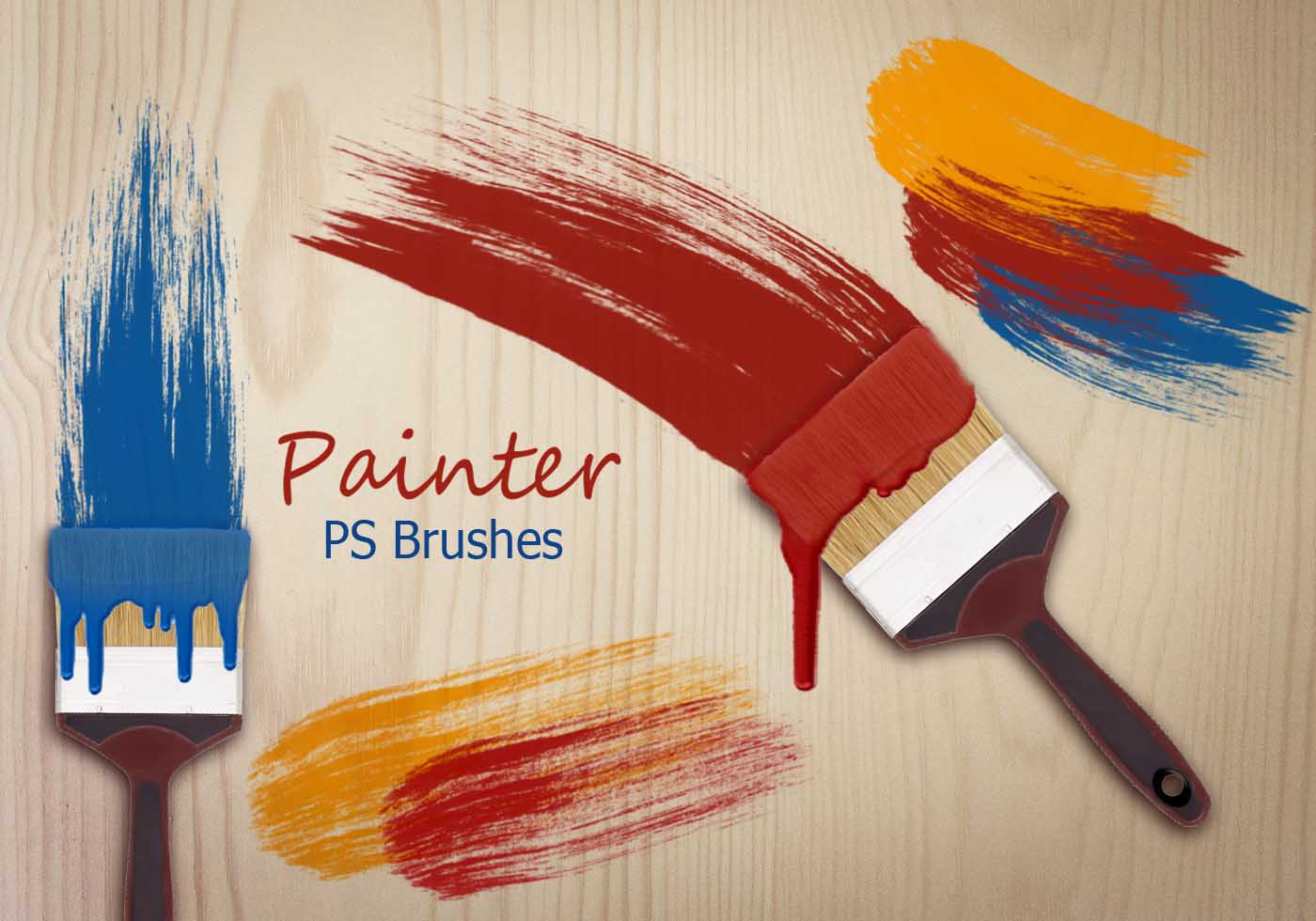

- #Paintbrush painting how to
- #Paintbrush painting full
I love the way the finished products look!īut the point of any process art isn’t the way the finished product looks the point is the actual making of the art work. The spaghetti paintbrushes make awesome lines and textures.

The colors in this process are brilliant and beautiful. Try whatever large surface you have available! These materials aren’t too precious so you could even try it more than once! You could even try this method of painting on newsprint, tissue paper, or a recycled cardboard box. We used big paper like this 12 x 18 drawing paper. Spaghetti paintbrushes can be dipped into food coloring mix and then straight on to the paper to paint. Drop 5-6 drops off one color of food coloring in a container and add a small dash of water (maybe a TBSP or two) to dilute the color a bit and make it easier to move around. To prepare for painted you will need some shallow bowls or paper plates, food coloring, and water. Really only the bottom few inches of the pasta needs to be cooked! You want noodles that are flexible enough to move paint around but not so soft they get mushy when paint is added. Lay spaghetti paintbrushes in making sure that the rubber band portion stays above the pot.
#Paintbrush painting full
Bring a small-ish pot of water to a full boil. Using a smaller pot so more pasta sticks out of the water will ensure your rubber bands stay in place.Īdults this step is for you. If you use rubber bands you do need to be careful that they do not touch the pot as a the water boils in the nest step. Secure with rubber bands or tie tightly with yarn. Gather small bunches of pasta approximately 1/2-1 inch in diameter. Start with straight pasta spaghetti, fettuccine, something along those lines. Spaghetti paintbrushes and some food coloring paint make for a super fun art project straight out of the pantry. We're here to help.Creating a paintbrush out of an unusual material, such as pasta, brings an element of fun to this process art activity. This lifting action helps to feather the paint and obtain a smoother finish.
At the end of each brush-stroke, lift the paint brush from the surface. Always work the brush into the wet paint. The objective here is to eliminate brush strokes going in different directions. Draw the brush lightly across in long smooth strokes to make the painted surface even. This part is all about finesse, so take your time. Once the paint has been applied the next step is to smooth it out. Next use horizontal strokes to distribute the paint on the large area. The paint will likely go on a little heavy here. Again use just enough pressure against the wall to flex the bristles. Hold the brush at a 45 degree angle then paint the area using diagonal strokes. This normally best done using a roller and tray, however if you need to paint a larger area using a brush then a different technique in applying and distributing the paint is required. The darker colour paint would then be cut -in and painted on top of the lighter color. If the cut-in corner has two different colours – like a wall/ceiling, then the lighter colour paint should extend into the darker colour area slightly. Pressing the brush against the wall with just enough pressure to flex the bristles, use the narrow edge of the paint brush when cutting in. This way you’ll be able to see how well the paint is flowing. Cut in the wall at the ceiling corners from left to right if you are right-handed. A paint brush is normally used to cut-in because it gives most control. This is where you paint the corners at walls and ceilings and around baseboards and door/window trim etc. Cutting-inįor large flat wall areas it’s best to use a roller and tray. That merely removes the paint making the brush less efficient. Do not scrape the paint off by dragging the brush across the edge of the tin or pail. This has the affect of loading the paint on the interior of the brush. Then tap both sides of the brush against the side of the paint tin or pail. To stop the brush from being overloaded with paint and prevent dripping, only dip the brush into the paint up to 1/3 of the length of the bristles. Some even come with disposable liners – very handy. Paint Pail: If you want to decant the paint into a paint pail, there are a few useful products available from most paint suppliers. This hooks onto the tin to provide a useful handle for carrying the paint tin around. Paint Can Handle: You can use a Canclaw. If you are using a brush (rather than a roller), there are two ways to carry paint with you as you paint:. You can either use paint straight from the tin or ‘decant’ some paint into a painting pail. There is a proper way to load paint onto the brush. #Paintbrush painting how to
Here are some handing hints on how to use paint brushes for a professional finish.






 0 kommentar(er)
0 kommentar(er)
